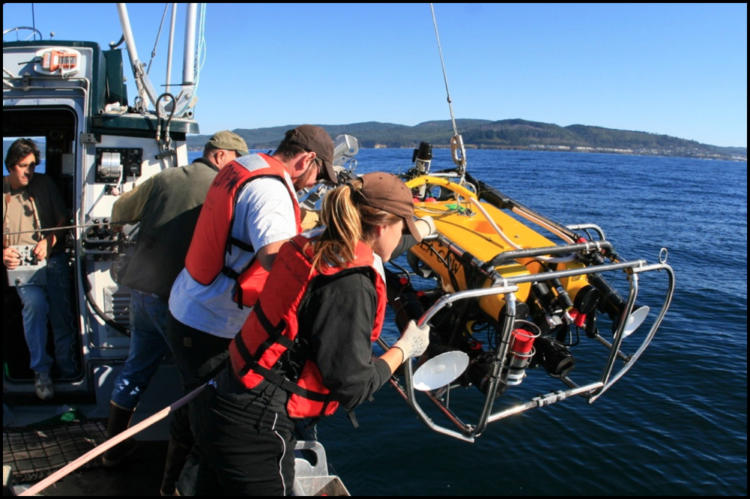
Soft substrates make up much of the Nearshore subtidal bottom habitat. Two of Oregon’s most economically valuable commercial fisheries, Dungeness crab and pink shrimp, occur in soft bottom habitat. Like many crustaceans, both of these species begin their lives as plankton drifting in the water column with the ocean currents before settling out to the bottom as they develop and grow. Both of these species can be found as adults in Oregon nearshore waters as well as in the deeper waters outside and adjacent to Oregon’s territorial sea. Though the pink shrimp fishery is primarily conducted in deeper waters outside of Oregon’s territorial sea, roughly half of the crab pots targeting Dungeness crab are typically set in Oregon’s Nearshore waters at depths of 30 fathoms or less.
The short video below was captured by ODFW’s Marine Resources Program researchers using a remotely operated vehicle equipped with a high definition camera transiting over soft bottom habitat in Nearshore waters. Although many soft bottom dwelling species live in the sediments out of view of the camera, both pink shrimp and Dungeness crab as well as a number of other species that live in or on the soft bottom are seen in their natural habitat. Adult pink shrimp, several sea whips, an adult Dungeness crab, a sea anemone, and a sunflower star are in the first section of the video. The second section captures video of newly settled juvenile Dungeness crabs in high densities. The final video clip shows a small section of a vast sand dollar bed.